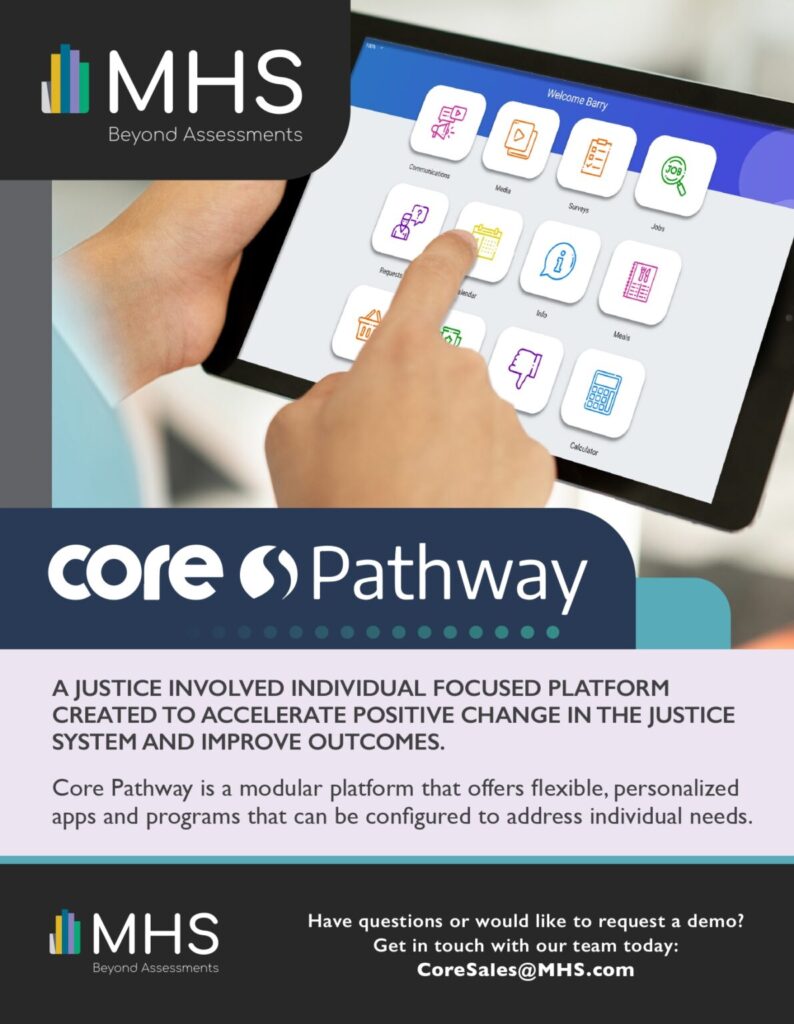Article
Sarah Spence
Education is a cornerstone of rehabilitation, particularly for justice involved individuals striving to rebuild their lives. Equipping correctional environments with software solutions that provide office tools tailored to educational content unlocks opportunities for personal growth, vocational development, and effective reintegration into society.
In reshaping the outlook for justice-involved individuals, the “right educational environment can encourage critical reflection and inspire inmates to move away from criminal activity (Behan, as cited in¹).” That said, recent critiques reveal an unsuspecting truth: that current delivery mechanisms often fail to meet these goals, indicating a need to re-evaluate the implementation of these services (Flynn & Higdon, as cited in¹).
Reimagining correctional education through technology
Despite wide recognition of education’s transformative potential in prisons, its implementation is often hindered by security concerns, outdated infrastructure, frequent transfers and shortages of trained educators. Moreover, standardised learning models frequently fall short in addressing the diverse educational backgrounds and needs of learners, many of whom require tailored support due to learning disabilities, language barriers, or emotional and behavioural difficulties. This underscores the urgent need for more personalised and flexible approaches¹.
Digital tools can help overcome barriers related to funding, access, and security, while equipping justice-involved individuals with computer skills critical for reintegration into society². Correctional education must be redesigned to reflect 21st-century learning methods to fully realise these benefits. This includes integrating modern technologies and resources that support both educators and learners.
The secure digital office suite within Core Pathway is a powerful tool for personal development, offering justice-involved individuals the opportunity to build essential digital skills in a safe, structured environment. By mimicking familiar office platforms, learners can confidently engage with tools for word processing and spreadsheets. These tools are practical for completing assignments or creating CVs, but also open new avenues for creativity, such as writing personal reflections, tracking rehabilitation goals, or planning community projects. Importantly, this approach supports digital equity by ensuring that incarcerated learners are not excluded from the digital world.
Justice-involved individuals: A pathway to growth
Structured activities and opportunities for personal development are vital for successful rehabilitation. Core Pathway enhances the rehabilitative environment by providing access to essential secure office tools and fostering a sense of purpose, progress, and digital empowerment.
Access to office tools enables them to engage effectively with educational materials, complete assignments and projects independently, and take part in e-learning sessions that bridge the gap between imprisonment and educational opportunities. All the while, preparing them for modern work after release. Security is foundational in this approach: access is tightly controlled, data is protected, and usage is monitored in compliance with institutional protocols. For learners, it means gaining hands-on experience with tools that are not only practical but also safe, building digital literacy in a controlled, trusted environment.
Correctional staff: Enhancing efficiency and communication
In modern correctional environments, digital office tools are essential allies for prison staff tasked with delivering education and rehabilitation. Platforms like Core Pathway are transforming how staff engage with learners, enabling them to distribute content, track progress, and provide feedback easily. This shift from paper-based systems to digital workflows streamlines operations and ensures that educational programmes are consistent, scalable, and accessible across facilities.
Beyond efficiency, these tools empower staff to tailor learning experiences to individual needs, whether addressing literacy gaps or adapting to different learning paces. With real-time notifications available on the interface, and secure messaging, staff can monitor engagement, flag issues early, and maintain a structured yet flexible approach to rehabilitation. Ultimately, this digital support allows staff to focus more on mentoring and less on administration, fostering a more purposeful and rehabilitative environment for everyone involved.
For educators, teaching in correctional settings also comes with unique challenges, including security protocols, diverse learning needs, and varying levels of prior education among justice-involved individuals. Office solutions tailored for correctional settings enable educators to set up individual learning plans that meet each student’s needs, monitor progress as it happens so lessons can be adjusted quickly, and keep digital records of achievements that highlight clear gains. By making programme management simpler.
A vision for the future
Core Pathway is reshaping the landscape of correctional education by offering modern digital tools that directly address long-standing challenges such as funding limitations, accessibility barriers, and security concerns. These tools are more than just functional; they are transformative. By equipping justice-involved individuals with essential digital skills, Core Pathway lays the groundwork for successful reintegration into society, helping them build confidence for life beyond custody.
For educators and learners alike, the platform fosters more effective engagement. Whether creating documents, organising data, or sharing information, these tools support a more dynamic and impactful learning experience. They empower individuals to apply their knowledge in a practical, real-world context, enhancing their educational journey and prospects for a brighter, more sustainable future.
The path from incarceration to community reintegration begins with access to the right resources. By embracing technology as a strategic partner in this journey, we can unlock the full potential of every individual seeking a second chance, transforming rehabilitation into a platform for lasting change and opportunity.
References
¹ Ms. Monica & Dr. Geeta. (2024). The future of rehabilitation: AI and the transformation of education in prisons. Educational Administration: Theory and Practice, 30(2), 916–922.
² Brazzell, D., Crayton, A., Mukamal, D. A., Solomon, A. L., & Lindahl, N. (2009). From the classroom to the community: Exploring the role of education during incarceration and reentry. Urban Institute.

Sarah Spence is a Marketing Specialist at MHS, holding a Master’s degree in History with a focus on domestic terrorism. With a strong background in B2B marketing, she brings her expertise to the criminal justice sector, delivering tailored solutions and innovative strategies. Her approach combines analytical insights with market research and awareness of technological advancements. Sarah aligns marketing efforts with brand goals, leveraging data-driven insights to inform product development, thought leadership, and drive growth and engagement.
Advertisement



